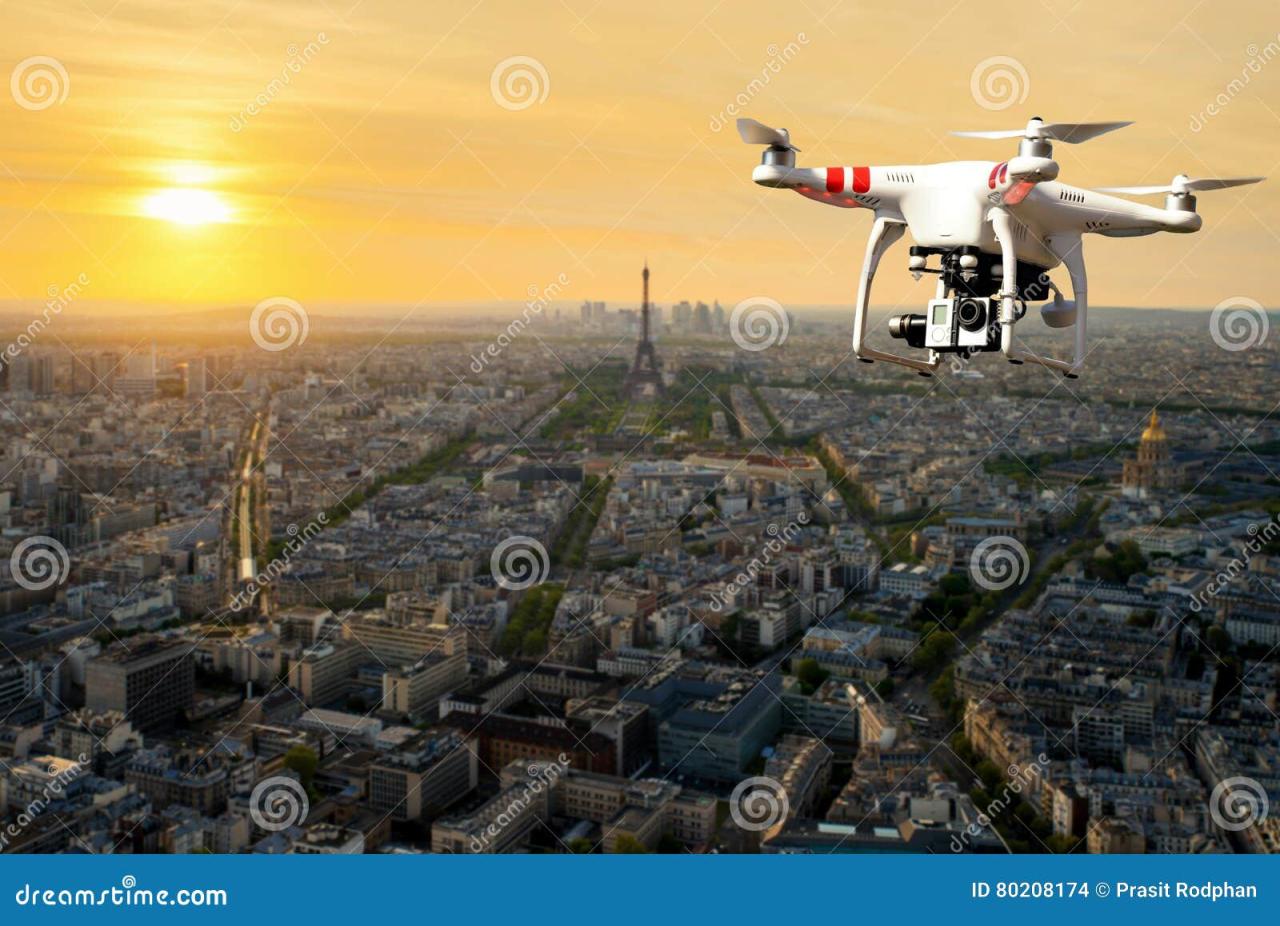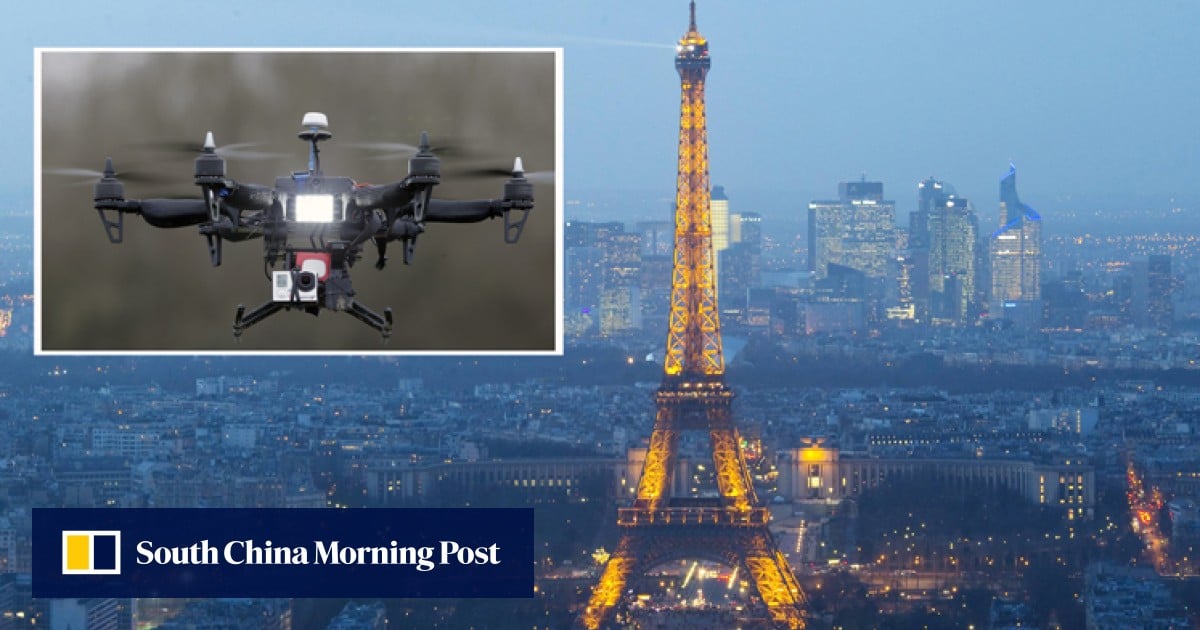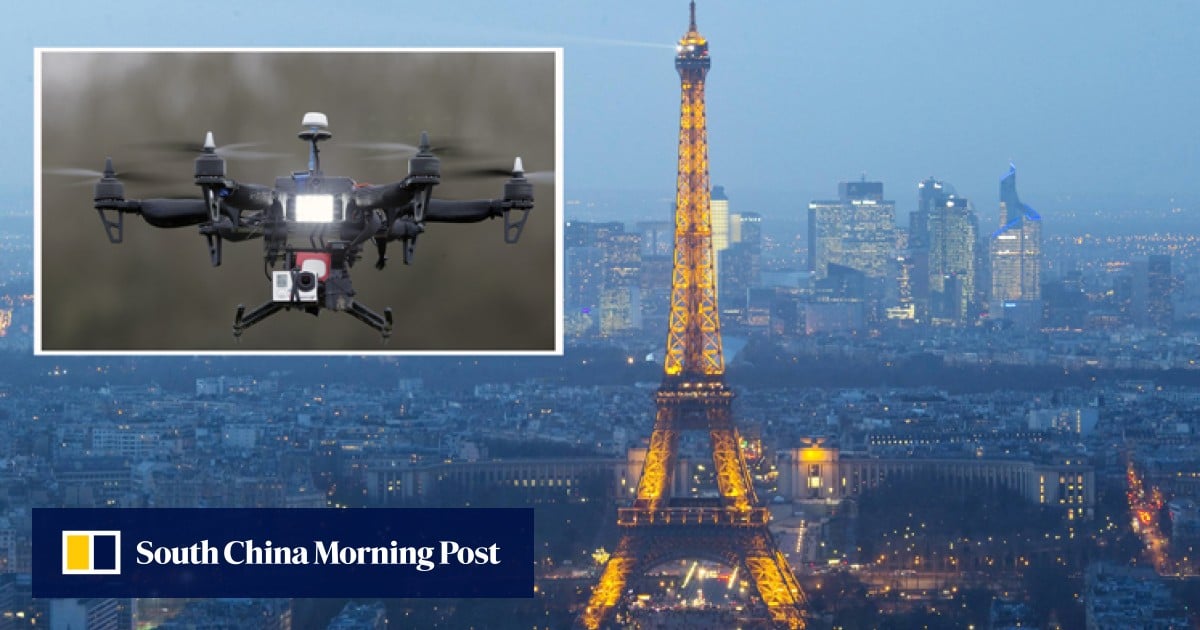Drone Paris: Imagine a city of lights, viewed not just from the ground, but from the breathtaking perspective of a drone. This exploration delves into the world of unmanned aerial vehicles (UAVs) in the City of Lights, examining the regulations, popular uses, economic impacts, safety concerns, and the exciting future of drones in Paris. We’ll cover everything from capturing stunning aerial photography to the challenges and opportunities this technology presents.
From the intricate regulations governing drone flights over iconic landmarks like the Eiffel Tower to the burgeoning commercial applications in sectors like tourism and construction, we’ll uncover the multifaceted role drones play in modern-day Paris. We’ll also address safety concerns and explore how technological advancements are shaping the future of drone integration within this vibrant city.
Drone Regulations in Paris
Navigating the airspace above Paris with a drone requires careful attention to the specific regulations in place. These rules, designed to ensure safety and security, cover permitted flight zones, altitude restrictions, and necessary permits. Understanding these regulations is crucial for responsible drone operation.
Specific Drone Regulations in Paris, Drone paris
Paris, like many major European cities, has implemented strict regulations to manage drone operations within its city limits. These regulations aim to balance the benefits of drone technology with the need for public safety and security.
| Regulation Type | Specific Rule | Penalty for Violation | Applicable Zone |
|---|---|---|---|
| Flight Zones | Flights are generally prohibited within a certain radius of airports, major landmarks, and densely populated areas. Specific authorized flight zones are limited and often require prior authorization. | Fines ranging from several hundred to thousands of Euros, potential drone confiscation. | Paris city limits, including specific no-fly zones around sensitive areas. |
| Altitude Restrictions | Maximum flight altitudes are typically restricted to a low level, often below 150 meters (500 feet), and sometimes much lower depending on the location. | Similar fines and potential confiscation as above. | Paris city limits, with stricter limitations near sensitive areas. |
| Permits and Licenses | Operating a drone commercially or for specific purposes (e.g., filming, surveying) often necessitates obtaining specific permits or licenses from relevant authorities. Recreational use may also have restrictions. | Significant fines and potential legal action. | Paris city limits, depending on the type of drone operation. |
Comparison with Other European Cities
While the specifics vary, Paris’ drone regulations align with the general trend in major European cities. Cities like London, Amsterdam, and Berlin also have strict regulations concerning flight zones, altitude limits, and required permissions. However, the exact implementation and enforcement may differ based on local circumstances and priorities. For example, London might have a more comprehensive system of designated flight zones, while Amsterdam might focus more on enforcement near Schiphol Airport.
The key similarity across all these cities is a commitment to balancing drone innovation with safety and security.
Popular Drone Activities in Paris
Drones have become a popular tool for various activities in Paris, offering unique perspectives and functionalities. Three key activities stand out: photography, videography, and inspections.
Drone Photography in Paris
Drone photography captures breathtaking panoramic views of iconic landmarks like the Eiffel Tower, Louvre Museum, and Notre Dame Cathedral. The ability to capture unique perspectives from above enhances the aesthetic appeal and storytelling potential.
- Advantages: Unique perspectives, stunning visuals, wide-angle shots.
- Disadvantages: Weather dependent, potential for airspace restrictions, requires skill and technical knowledge.
Drone Videography in Paris
Drone videography provides cinematic aerial footage, showcasing the beauty and dynamism of Paris. This is particularly useful for creating promotional materials, documentaries, or personal travel videos.
- Advantages: Dynamic and engaging visuals, captures movement and atmosphere, excellent for storytelling.
- Disadvantages: Requires specialized equipment and skills, editing can be time-consuming, potential for technical difficulties.
Drone Inspections in Paris
Drones are increasingly used for inspections in various sectors, such as construction, infrastructure maintenance, and security. Their ability to access hard-to-reach areas makes them efficient and cost-effective.
- Advantages: Cost-effective, efficient, safer than traditional methods, detailed inspections.
- Disadvantages: Requires specialized training and equipment, weather dependent, data analysis can be complex.
Economic Impact of Drones in Paris
The integration of drone technology is gradually shaping the economic landscape of Paris, contributing to various sectors and promising further growth. While precise quantitative data is limited, the overall impact is demonstrably positive.
Drone Technology’s Economic Contributions
The tourism sector benefits significantly from stunning drone footage used in marketing and promotional materials. The construction industry leverages drones for site surveys, progress monitoring, and safety inspections, increasing efficiency and reducing costs. Delivery services are exploring the potential for drone-based deliveries, although this remains in its early stages in Paris. The potential for economic growth is substantial, particularly as technology advances and regulations evolve to support wider adoption.
Future Economic Growth

The future economic impact of drones in Paris is likely to be substantial. As technology advances, drones are expected to play an increasingly important role in various sectors, creating new job opportunities and boosting economic activity. This includes advancements in autonomous flight, improved sensor technology, and the development of sophisticated drone management systems. The city’s commitment to innovation and its strong technological infrastructure position it well to capitalize on these opportunities.
Summary of Economic Impacts
The positive economic impacts include increased efficiency in various sectors, creation of new jobs, and enhanced tourism appeal. Negative impacts, such as potential job displacement in certain areas and the need for investment in infrastructure, are likely to be mitigated by careful planning and responsible implementation. Future scenarios point towards a significant contribution to Paris’ economy, provided challenges related to regulation and public acceptance are addressed effectively.
For example, imagine a future where package deliveries are seamlessly integrated into the city’s logistics system, reducing traffic congestion and improving efficiency. This scenario demonstrates the potential for significant economic benefits.
Safety and Security Concerns Related to Drones in Paris
Despite the benefits, drone operation in a densely populated city like Paris presents safety and security concerns. These concerns require careful consideration and proactive mitigation strategies.
Potential Risks and Incidents
Airspace congestion near airports and major landmarks poses a significant risk. The potential for misuse, such as unauthorized surveillance or attacks, is another concern. Privacy violations are also a possibility, as drones can potentially capture images or videos of individuals without their consent. While specific documented incidents may be limited due to privacy concerns, near misses involving drones and aircraft are common in other major cities and serve as a cautionary example of potential risks.
Flying drones in Paris? Awesome, but you’ll need a strong signal for your controller’s video feed, especially in crowded areas. Consider boosting your Wi-Fi range with a powerful amplificateur wifi to maintain a reliable connection and avoid losing control of your drone. This is crucial for safe and successful drone operation in the city of lights.
Mitigation Measures
Paris already employs several measures to mitigate these risks, including strict regulations, designated no-fly zones, and enforcement by authorities. However, further measures could include advanced drone detection systems, improved public awareness campaigns, and collaboration with drone manufacturers to develop safer technologies. For instance, geofencing technology could be further refined to prevent drones from entering restricted airspace automatically.
Drone Photography and Videography in Paris: Drone Paris
Drone photography and videography offer unparalleled perspectives of Paris’ iconic landmarks and charming streets. The ability to capture breathtaking visuals from above significantly enhances the aesthetic appeal.
Examples of Stunning Drone Footage

Imagine a sweeping shot of the Eiffel Tower at sunset, the golden light illuminating the structure against a vibrant sky. The perspective from above captures the intricate details of the tower and its surrounding landscape, showcasing its grandeur. Similarly, a low-angle shot of the Louvre Museum, with its glass pyramid reflecting the Parisian sunlight, reveals a unique perspective on this iconic landmark.
The Seine River winding through the city, with its bridges and bustling activity, creates a dynamic and engaging visual narrative.
Comparison with Traditional Methods
Drone photography offers perspectives impossible to achieve with traditional methods. While traditional photography captures intimate details and ground-level perspectives, drones offer a broader, more panoramic view, revealing the city’s intricate layout and the relationships between its landmarks. The combination of both methods provides a comprehensive visual experience.
So you’re into drone photography in Paris? Amazing city for aerial shots! But before you start buzzing around the Eiffel Tower, you’ll want to check the regulations and maybe even get a proper drone pilot license in Canada if you’re planning on flying there. Knowing the rules is key for safe and legal drone operation in Paris, ensuring you can capture those stunning Parisian views without any problems.
Tips for High-Quality Drone Footage
- Shoot during golden hour for optimal lighting.
- Check weather conditions and avoid strong winds.
- Plan your flight path to avoid obstacles and restricted airspace.
- Use appropriate camera settings for the lighting conditions.
- Experiment with different angles and perspectives.
Future of Drones in Paris
The future of drone technology in Paris holds immense potential, driven by ongoing technological advancements and evolving societal needs.
Emerging Trends and Advancements
Advancements in autonomous flight, artificial intelligence, and sensor technology will enable more sophisticated and efficient drone operations. Integration with existing city infrastructure, such as smart city platforms, will further optimize drone usage. The development of drone delivery services, optimized for navigating the city’s complex streets, is a likely scenario.
Challenges and Opportunities

Challenges include ensuring safe integration into the existing airspace, addressing privacy concerns, and managing public perception. Opportunities include economic growth through job creation, improved efficiency in various sectors, and enhanced quality of life for citizens. Overcoming these challenges will require collaborative efforts between government agencies, technology developers, and the public.
A Day in Paris in 2030
Imagine waking up in Paris in 2030. A drone silently delivers your morning coffee, navigating the city’s airspace with precision. During your commute, you witness drones conducting infrastructure inspections, ensuring the safety and smooth operation of the city’s systems. In the evening, you enjoy a spectacular drone show illuminating the Eiffel Tower with vibrant colors and dynamic patterns.
This vision highlights the potential for seamless integration of drones into daily Parisian life, enhancing efficiency and enriching the urban experience.
So you’re into drone photography in Paris? Amazing city for aerial shots! If you’re shipping your drone gear back to Canada, though, you’ll probably need to track your package; you can find the UPS Canada phone number here: ups canada phone number to get updates. Once you’ve sorted that, you can get back to capturing those stunning Parisian views from above!
Final Wrap-Up
So, as drones continue to evolve, their presence in Paris is poised to become even more integrated. From revolutionizing tourism and infrastructure management to raising new safety and privacy questions, the story of drones in Paris is a dynamic narrative of technological advancement, urban integration, and the ongoing quest for a balance between innovation and responsible use. The future of drone technology in Paris promises exciting possibilities, but responsible operation and careful regulation will be key to unlocking its full potential.
Helpful Answers
What types of drones are most commonly used in Paris?
Small, lightweight drones with high-quality cameras are popular for photography and videography. Larger drones are used for commercial applications like inspections.
Are there any specific no-fly zones besides airports?
Yes, many areas around sensitive sites like government buildings and military installations are restricted. Check the official regulations before flying.
What are the penalties for violating drone regulations in Paris?
Penalties can range from fines to drone confiscation, depending on the severity of the violation. Always adhere to the published rules.
How can I obtain a permit to fly a drone commercially in Paris?
You’ll need to apply through the relevant French aviation authorities. The process involves demonstrating competency and insurance.
